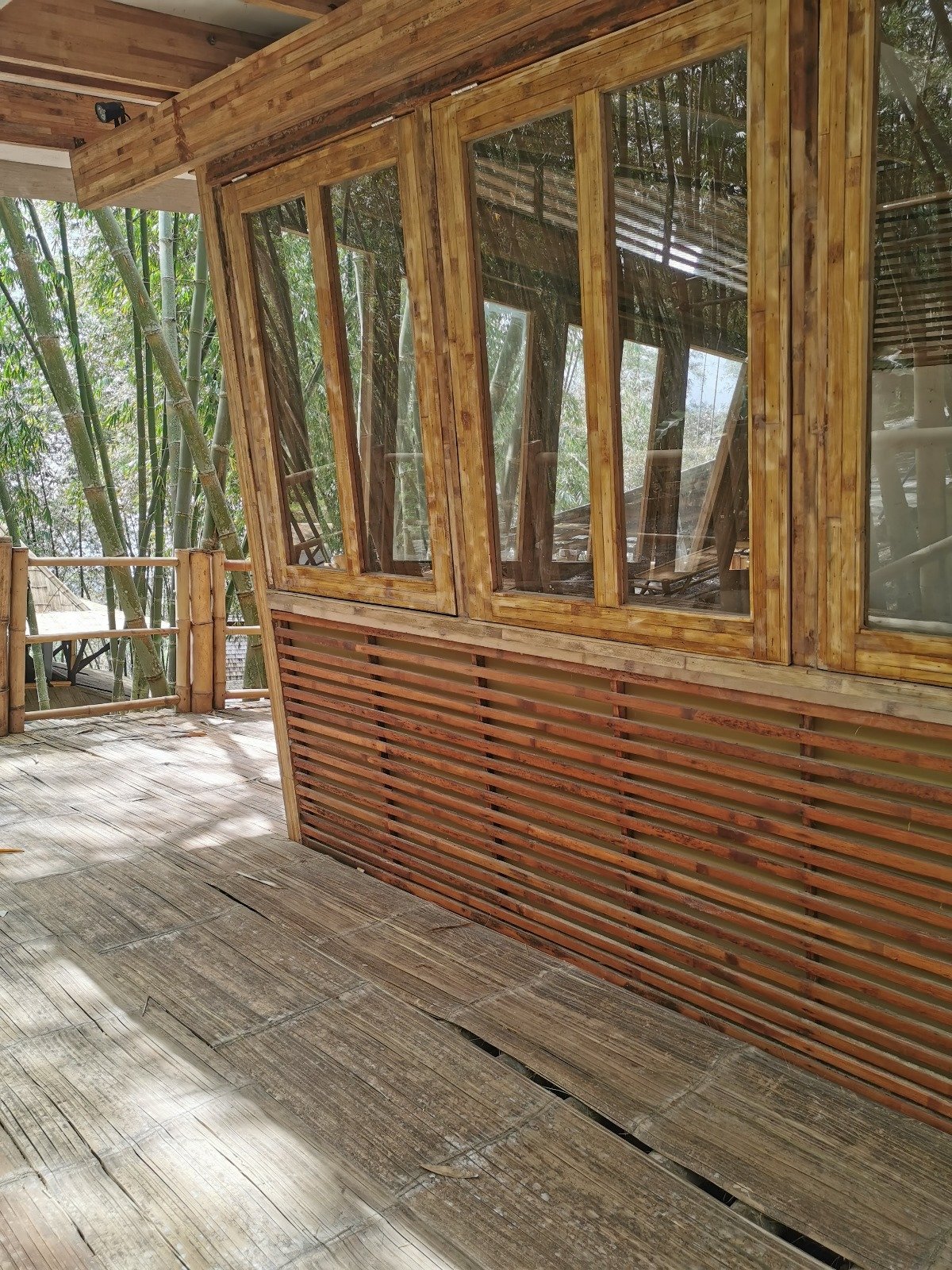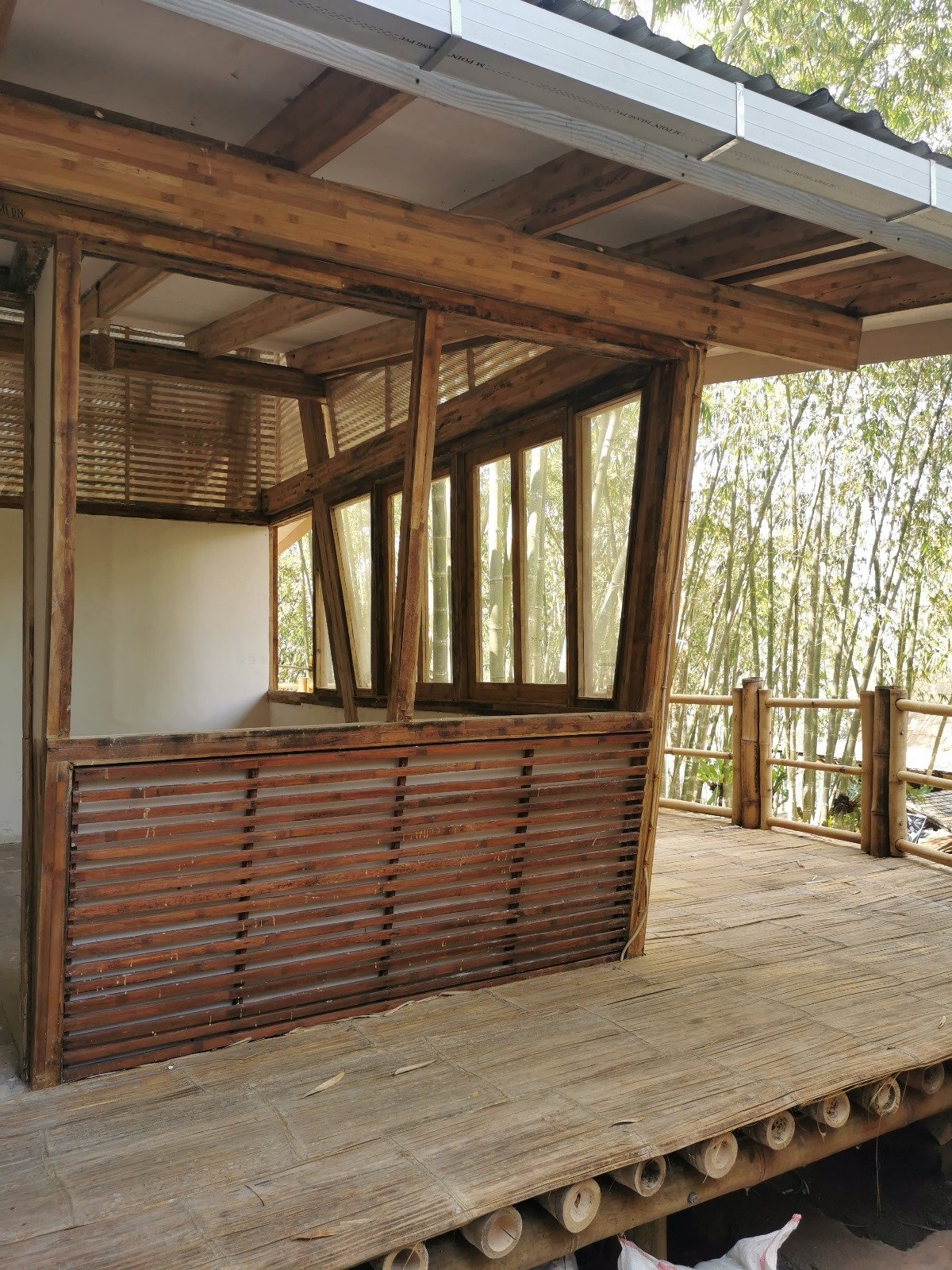Indobamboo - Social Housing Pilot
The increasing prevalence of environmental disasters and conflict crises leading to human displacement, disproportionately affects the most vulnerable population with the least capacity to withstand change. The intrinsic connection between shelter and wellbeing leads to a cycle of destruction and rebuilding, in order to meet the short-term humanitarian imperative. This results in the depletion of local environmental and social ecologies and thus reduces the long-term capacity for resilience.
Bamboo offers one solution to this problem due to its high strength, low cost, rapid growth and high availability within many of the disaster-prone and conflict regions of the world. When utilised in the right context, bamboo has the capacity to from part of a system of restoration rather than degradation.
Construction of the Labuan Bajo Pavilion using a ‘kit of parts’
2020 Bajawa, Indonesia Design: Cave Urban Manufacturing: Indobamboo
Indonesia is home to some of the strongest traditions of bamboo craft and contemporary innovation of bamboo as a structural material. The On Thousand Bamboo Villages program seeks to improve the economic ecology of communities across the Indonesian archipelago through the cultivation, harvesting and processing of bamboo. It is a supply chain that is based upon restoration rather than extraction, where bamboo culms are harvested and processed into strips that are then distributed to communities to construct housing.
The end result is housing that references traditional vernacular typologies, whist also providing a strong and durable outcome. By integrating social housing into a system of restoration rather than degradation, the One Thousand Bamboo Villages Program seeks to improve the resilience of affected populations through the restoration of environmental and social ecology.
Prefabricated laminate bamboo structural elements designed to be bolted for assembly on site








